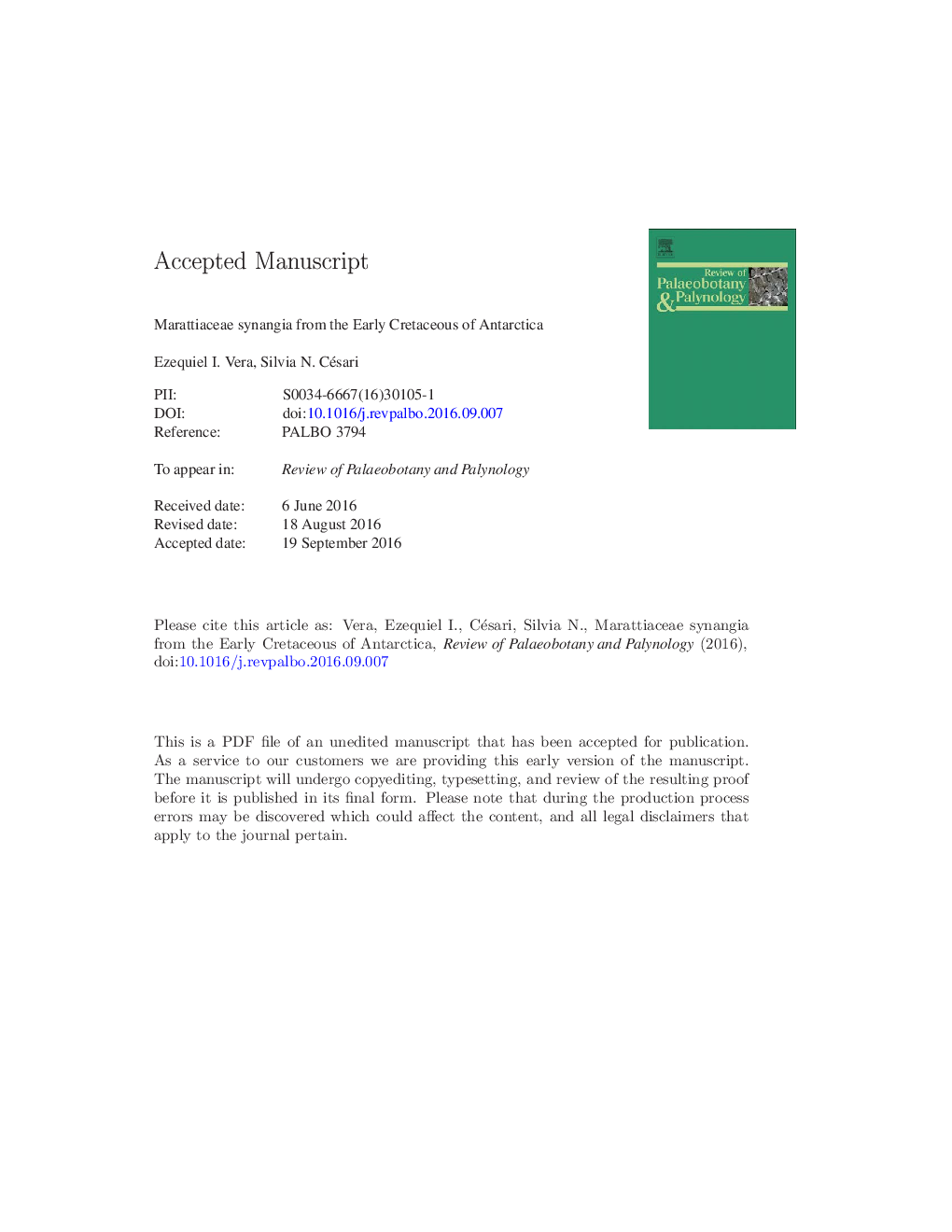| Article ID | Journal | Published Year | Pages | File Type |
|---|---|---|---|---|
| 6448621 | Review of Palaeobotany and Palynology | 2016 | 22 Pages |
Abstract
Marattiaceous ferns are conspicuous fossil element in upper Paleozoic and lower Mesozoic deposits, but become rarer to almost absent in Cretaceous to Holocene deposits. In this contribution, fragmentary synangia recovered from the Aptian Cerro Negro Formation (Livingston Island, Antarctica) are described. Synangia are bivalvate, containing at least four lachrymiform sporangia per valve. Valves are fused at the base, and connect to the leaf blade by a short peduncle. Sporangia contain more than 400 oval to reniform (probably monolete), smooth to microgranulate spores. The reproductive structures have morphological similarities with extant Marattia and Ptisana, and the apparent absence of labia suggests a closer relationship with the latter genus. The presence of Marattiaceae, along with previously described ferns (e.g. Cyatheales) supports warm climatic conditions during the Aptian in this region of Antarctica.
Keywords
Related Topics
Physical Sciences and Engineering
Earth and Planetary Sciences
Palaeontology
Authors
Ezequiel I. Vera, Silvia N. Césari,
